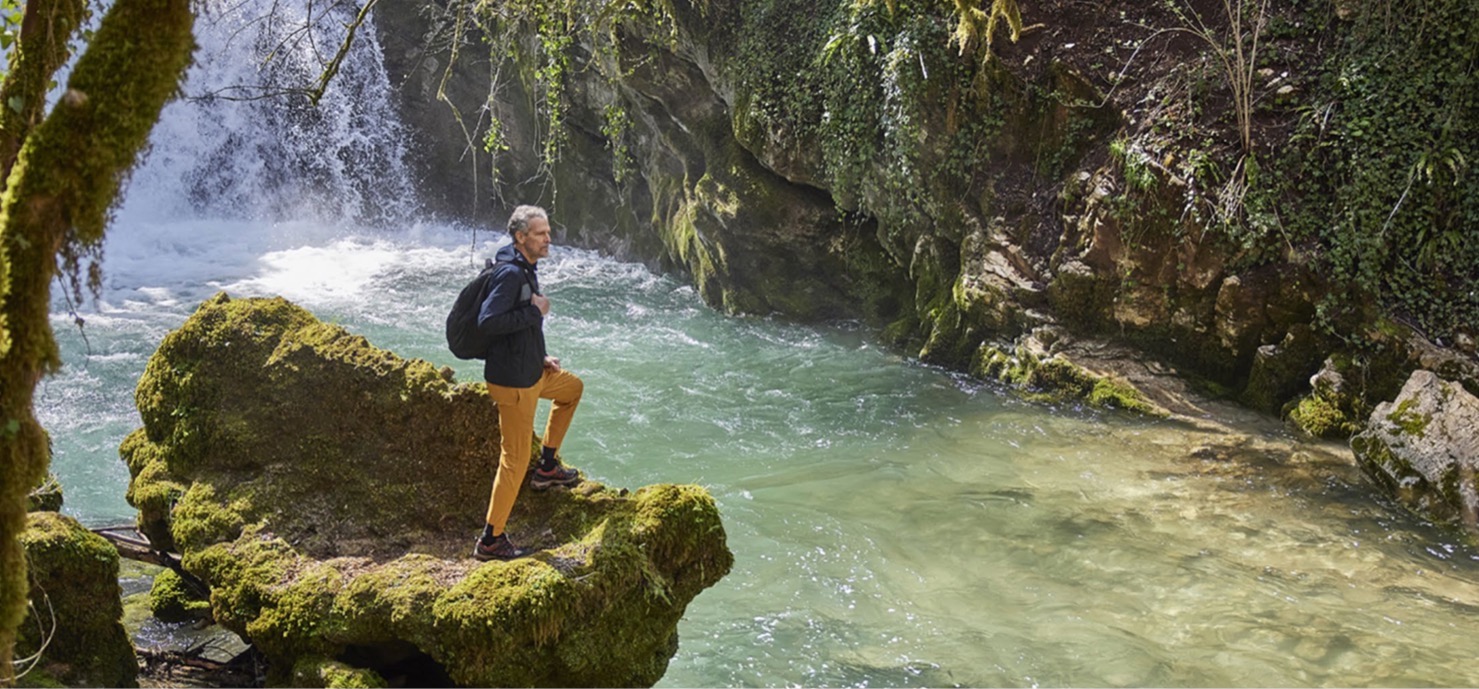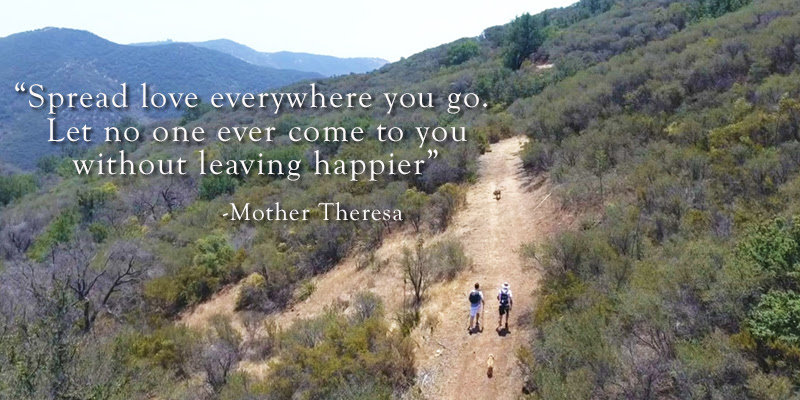
A message from Sue & Alex
Dear Ranch Guests!
Welcome 2018 the Chinese Year of the Dog! The symbol of loyalty and honesty, those born in the Year of the Dog – such as Mother Theresa – display the best qualities of human nature.
With January being a time for “making resolutions.” Often we focus on ourselves and what we will do or not do to improve our lives.
This year our resolution is not about ourselves, but to follow Mother Theresa’s lead and embrace our inner Dog spirit by spreading love wherever we go. We will do our best to do something to make everyone leave us happier through kindness, compassion, empathy and generosity.
In looking ahead to February, each Valentine’s Day we gather with friends for a poetry night in which we all write and recite our own love poems. We wanted to share Alex’s poem this year because it further speaks to this idea and offers some ideas on small gestures we can all do that bring joy to those around us.
Now off to spread some love!
Happy New Year!!!!
-Sue & Alex
Spreading Happiness & Love in the World
By W. Alex Glasscock
Oh, to Smile at a stranger. The potency and chemistry transcends all.
A happy face can lift a weakening heart or a burning soul. A smile can give people hope.
To deeply Laugh is medicine for the soul. It’s a youthful toy that we should never stop playing with. Young or old, it’s a wonderful way to connect with the world.
After all, we are all the same!
A simple Touch can mean so much. A gentle gesture that says, you are ok and I love you.
A hug that goes unforgotten. Taking time to embrace and help others heal.
A Compliment to another can send one’s heart soaring with validation and pride.
What a simple gesture to acknowledge the effort of others. A compliment
can make one’s day and empowers them to greatness.
It’s infectious and the feeling it creates, is not lost on oneself.
Inclusion brings people up. It gives them tools to be independent with newfound knowledge.
The team grows together in more ways than one.
To lovingly Listen to what someone is saying. There is so much
to be learned from hearing others. The answer is in the words and kindness toward others.
NEWS & NOTES
Andiamo!
The Ranch is going to Italy in August and September! Experience the most spectacular hiking Europe has to offer, while getting transformational wellness results at The Ranch Dolomites. Our new summer pop up featuring the Ranch 4.0 team will be operating from the iconic Hotel Rosa Alpina from August 19th – September 29th and is in high demand. Hurry and book before we fill up! Limited spots are still available the week of August 26th, with a waitlist open for all other weeks.

Please visit theranchlife.com/programs/#dolomites for more information or contact Melissa Newman at melissan@theranchmalibu.com to book or be placed on a waitlist. The Ranch Malibu will be fully staffed and open during this time so if you can’t make it to Italy we’d love to see you at our weeklong program in California!
Vote for Your Favorites!

We are thrilled to be nominated for Travel + Leisure’s 2018 World’s Best Awards in the Destination Spa category! It is because of your enthusiasm for our program that we are considered and now the winners are determined solely by your votes. We would sincerely appreciate your support by casting your vote before Monday, March 5, 2018. You’ll find The Ranch Malibu after selecting United States > California > Destination Spa. Winners will be announced in the August 2017 issue.
Get Your Greens!
To help you meet and maintain your healthy resolutions, our Ranch Complete Greens are being offered at a special price of $50 for one time purchases and $40 for all auto-ship orders until the end of the month. The 30-day supply will also ship with a recipe booklet to help you get your greens into your daily diet.
Check out a sneak peek of our favorite recipes in Chef’s Corner or visit our store to order now.

STAFF CHAT
Reid Esterson
Office Administrator, The Ranch Malibu

Always ready with a smile or kind word, Reid is a Southern California native with a passion for global travel, culture and adventure. You may be surprised to know that he’s lived in four countries – USA, Canada, Colombia and China – and speaks three languages – English, Mandarin Chinese and Spanish! With a unmatched enthusiasm for The Ranch, Reid has worked in wellness for more than 6 years and since his time with us has started to keep an entirely a vegan household. Read on to find out what guests ask him most often and what food he’ll never turn down.
What are you grateful for?
– I have so much to be grateful for in this life. To name some: Family, friends, a wonderful job, my health and a beautiful home.
Best/funniest thing a guest has said to you?
– One of the most memorable ones was when a guest grabbed my arm and looked me in the eyes and said, “I’ll give you $200 to take me to get a burger and a beer, plus I’ll buy yours, too.” We laughed at the comment, but I had to decline the tempting offer.
Most asked question from guests?
– “Can you tell me what time my massage is?”
First thing you do when you wake up?
– Turn on some easy listening, make some coffee, and read the news on my patio with my housemate.
Favorite Ranch Meal?
– Tamales!
Favorite Ranch product?
– 3-pack of Spearmint Rosemary Soap
Most ordered Ranch product?
– Granola for sure.
Go-to snack?
– Cottage cheese on a rice cake with dash of hot sauce.
Go-to workout?
– Spin
Favorite indulgence?
– Street Tacos – hands down. Leo’s Tacos (any of their food trucks) or Guero’s tacos in Downtown LA.
Your favorite hike/place to walk in Los Angeles?
– Walking from my house down to El Matador beach at low tide up to El Pescador beach and back home.
Do you have a personal mantra or favorite quote?
– Get outside, the world is your playground.
Favorite vacation spot?
– Taiwan
FROM THE GARDEN
Nature’s Remedies from The Ranch Malibu Master Gardener Geri Miller
As cold and flu season kicks into high gear, The Ranch Malibu Master Gardener Geri Miller invites you to try a medicinal indoor herb garden to help stay healthy and combat symptoms. Learn how some of the most common culinary herbs have been used for centuries to heal the body and how to grow them yourself at home!

What are some common herbs with a history of providing healing benefits?
Chives: In traditional folk medicine chives were eaten to treat and purge intestinal parasites, enhance the immune system, stimulate digestion and treat anemia.
German Chamomile: The medicinal use of chamomile dates back thousands of years to the ancient Egyptians, Romans, and Greeks. Treats chest colds, sore throats, abscesses, gingivitis, skin problems such as psoriasis, minor first-degree burns, ulcerative colitis and stomach ulcers. Tea made from the dried flowers is used to treat a large variety of ailments and the essential oil is found to be anti-fungal, anti-allergenic and anti-inflammatory.
Rosemary: In ancient Greece, students wore sprigs of this herb in their hair while they studied. Rosemary is believed to stimulate cerebral circulation thereby improving concentration and memory. With strong aromatherapy qualities, it is used in organic skin tonics and masques for its effectiveness as a toner and disinfectant.
Sage: Salvia, is derived from the Latin salvere, “to be saved,” in reference to the curative properties of the plant. Sage has numerous traditional medicinal uses. Its antiseptic qualities make it an effective gargle for inflammations of the mouth, tongue or throat. The leaves applied to an aching tooth will often relieve the pain. It is also an important domestic herbal remedy for disorders of the digestive system.
Thyme: Used in the Middle Ages as a treatment of epilepsy and depression, in 1975 a German pharmacist discovered that thyme’s essential oil, thymol, was a powerful disinfectant when used topically and an antibiotic/antifungal agent when taken orally. It is an antispasmodic and an anti-tussive used effectively in cough syrups to raise sputum and relieve coughing.
For a more comprehensive list
of medicinal plants from Geri,
check out:

How do I get started making my own indoor herb garden?
– Select an area of your kitchen that gets plenty of sunlight. Usually a south facing window with no obstructions (trees, buildings, etc.) should give your plants enough exposure to light and warmth.
– Use a container at least 6 to 12″ deep with a drainage hole. As a general rule, most herbaceous herbs have moderately shallow rooting.
– Choose a good organic potting soil from a company you know and trust.
Herbs need loose, well-draining soil with plenty of organic matter.
How do I select my plants?
– Select your plant material from a reputable nursery.
– The plant should look healthy with no obvious pest damage or disease. There should not be any roots growing out of the bottom of pot
– Small scale herbs are the best choice but if you are harvesting from the plant regularly, they should remain happily within bounds without stressing out its neighbor. Some good choices are sage, thyme, chives, cilantro, parsley, and dill. Rosemary can do well but you’ll have to leave it a little more legroom and harvest it often to keep it small.
I’m ready to plant, now what?
– Scatter pebbles along the bottom of the container to aid in drainage. You can also put a broken shard of a clay pot (a curved piece works nicely) to keep the soil from washing out. Fill it about a third of the way with potting soil.
– Lightly water the plant prior to transplanting to make sure it is not dry. Gently remove the seedling from the nursery pot. Loosen the roots with your fingers if they are encircling the rootball.
– Place in your new pot and fill with soil. Be careful to make sure the plant is level with the surrounding soil – no higher or lower. Lightly press down to make sure the rootball of the plant has made contact with the new soil and there are not any large air gaps. Water in thoroughly.
How do I maintain my new healthy herb garden?
– Water the plants only when they feel dry to the touch. Your environment is constantly changing so make sure you feel your soil to assess how dry or moist it is before you water. Herbs prefer soil to dry out a little bit between watering (rosemary and sage especially don’t like wet feet). Insert your finger down as deep as you think the roots are. If the soil feels moist…no water needed. If it feels dry, then it’s time to water.
– Water until the pot is freely draining out of the bottom and you don’t see any air bubbles forming at the top of the soil. Filling your sink with about an inch or two of water and setting the pot in it will allow the pot to slowly absorb only what it needs. This method, called “bottom watering,” takes the guesswork out of how much to water.
– Harvesting often will keep your plants small and will stimulate the plants to grow new leaves for you.
– Every two to three months, add a bit of organic liquid fertilizer to your water to replace the nutrients your plants are taking out of the soil. Fish emulsion is a fine all-purpose fertilizer.
THE UPSIDE DOWN
When people first start practicing yoga often times the word inversion only means one thing . . . Handstands!
In fact, there are several postures you can do to reap the benefits of inversions even if you can’t get completely upside down. Glenn Crocker, Senior Program Guide at The Ranch Malibu and Certified Yoga Instructor explains that “an inversion is anytime your heart is above your head and your hips are above your heart.” Just think of all the poses that aren’t handstands or headstands that allow you to do just that! By adding inversions to your regular practice Glenn notes that “over time not only will your flexibility grow but you will also see improvements in balance, strength, confidence and most importantly your health!” Read on for 4 different inversions of varying intensity that Glenn recommends to shift your perspective upside down!
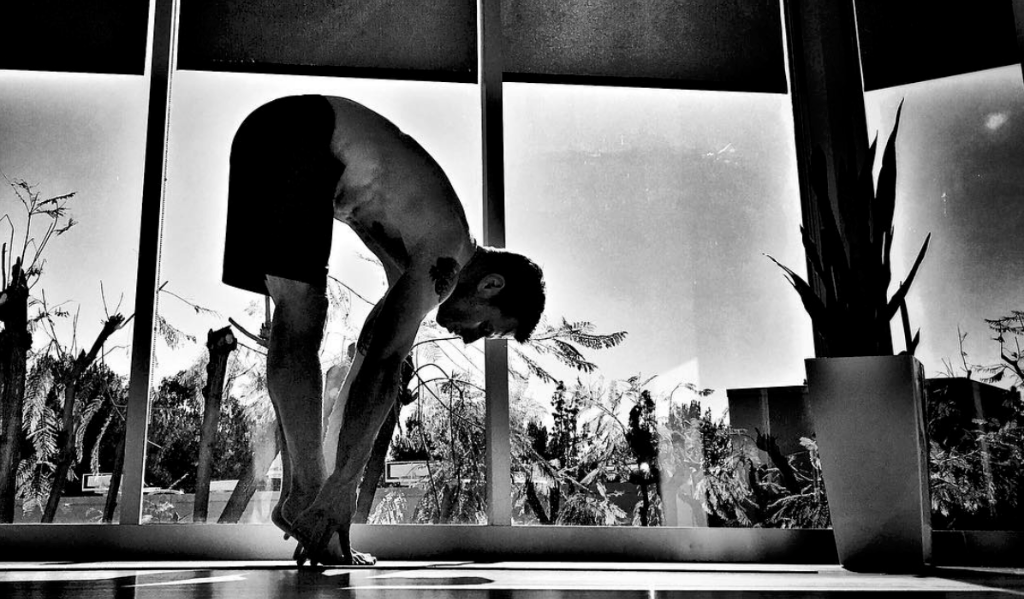
Forward Fold (Uttanasana)
– Increases flexibility in the hamstrings and calves while calming the mind
From a standing position, feet together place your hands on your hips (Inhale). Exhale and bend forward with a straight back hinging at the hip joints rather than the waist. As you fold create length by extending the torso out of the midsection.
Extend the arms down towards the floor bringing your fingertips down in front or to the sides of your feet. If you can get your palms down – Great! If you can’t touch the ground – Great! Press the heels into the floor and lift your hips up. With each breath in, lengthen the torso, and with every out breath go further into the fold.
Stay in the pose long enough for the hamstrings to find some length and release (about 30 seconds), and on an exhale bring your hands to your hips and rise up with a flat back into a standing position.
You don’t have to be flexible to practice yoga, just willing!
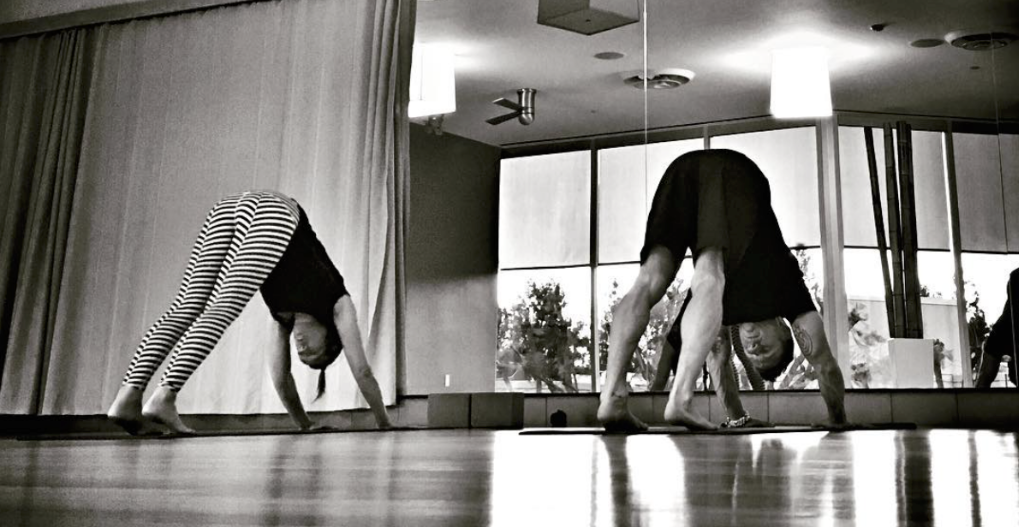
Downward Dog (Adho Mukha Svanasana)
– Increases flexibility in the hamstrings and calves, builds strength and endurance in the arms, legs and core while also calming the mind
From child’s pose or a table top position on your hands and knees place your hands shoulder distance apart and tuck your toes under and lift your hips. Feet are hips width distance apart (look down and check them out). Spread your fingers wide and press into the thumb and the index finger, which will internally rotate your forearms.
Pull your shoulder blades toward the outsides of your back (abduction) which will externally rotate the upper arm creating a spiraling effect between the upper and lower arm. This will also pack the shoulder blades to keep you from scrunching in the shoulders and create length in the back.
Head and neck line up with the spine always seeking what you could imagine being good posture (although you are upside down).
Draw the core up and in will support the spine and even the weight out in the hands and the feet.
Lift the sitting bones up and back and straighten your legs, pressing the heels toward the floor while internally rotating your thighs and firming your legs. Hold for about 30 seconds.
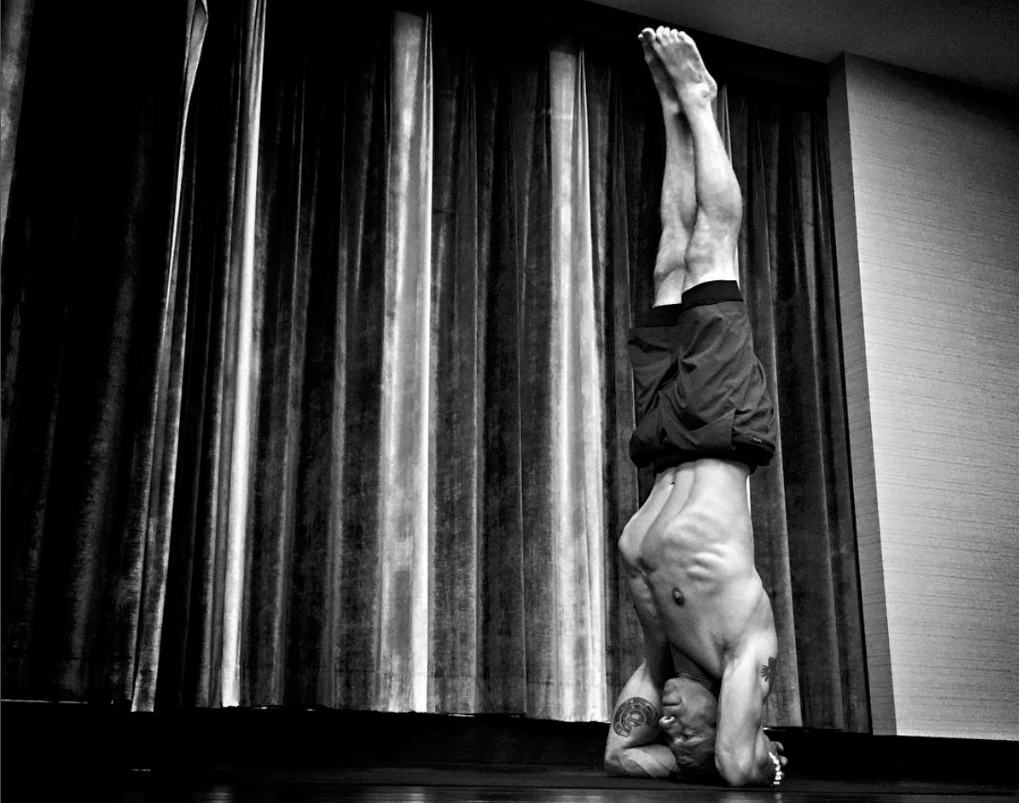
Headstand (Sirsasana)
-Reverses the flow of blood in the body to support the lymphatic and immune systems, improves balance and upper body and core strength.
First of all, if you have neck issues or injuries do not do a headstand.
Most important is your base. Make a triangle with your forearms making sure your elbows are shoulder width apart. Intertwine your fingers taking the lower pinky out of the grip and putting it inside the hands so it doesn’t get squished.
Use Dolphin pose as a starting point (down dog on forearms) and walk your feet towards your elbows. This will build the strength in your arms and shoulders and will help to prepare for your headstand.
Once you are able to support yourself on your forearms in Dolphin, begin stacking your head over your base (without putting it on the floor) your body should always be supported by your arms rather than your head and neck. Once stable, engage your core and bring one leg at a time in towards your body. Support yourself with your arms with your legs bent and tucked into your body.
Never kick into the headstand. Once you’re ready and stable begin to lift your legs straight up in alignment with your upper body. There is a tipping point so be careful not to bring your feet over your head. If anything have your legs forward slightly to avoid tipping over your head. You can correct your alignment slowly while inverted.
It is great to do this with a friend to spot you and to tell you where you are in space. If you are alone, practice near a wall to build your confidence.
After about 30 seconds, come out of the pose the same way you came in. Legs lower into your body and then lower your hips till your feet come to the ground. Then take a big breath and give your friend a high five!
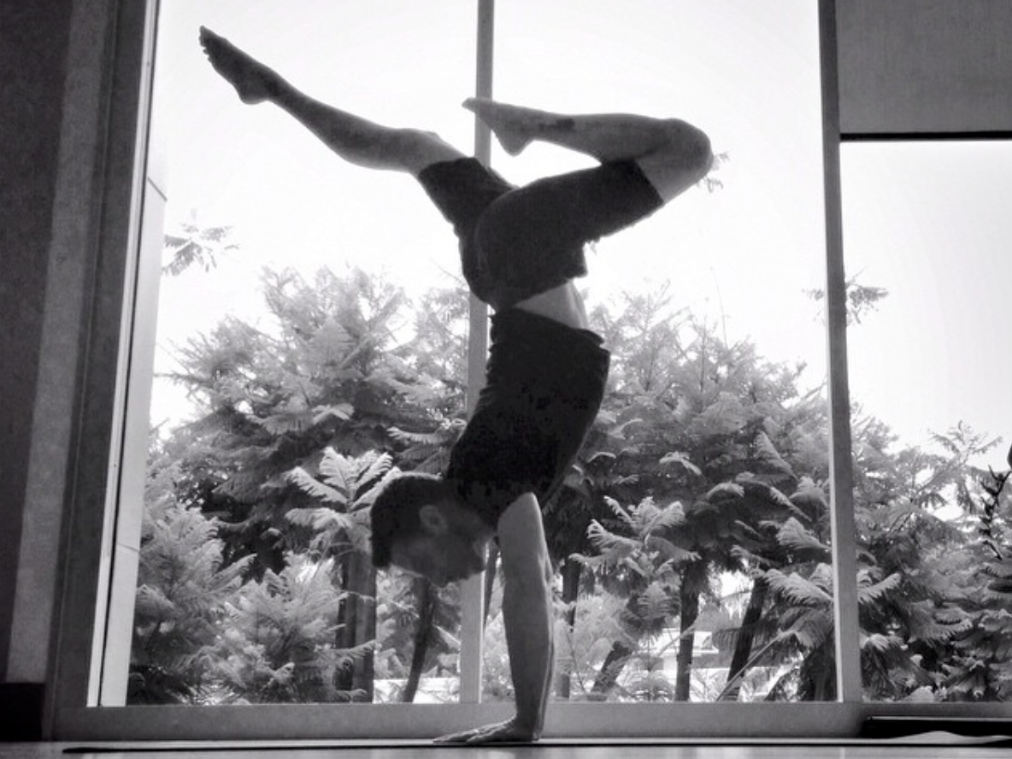
Handstand (Adho Mukha Vrksasana)
-Reverses the flow of blood in the body to support the lymphatic and immune systems, improves balance and upper body and core strength.
Handstands are a great way to get over your fear and build strength and confidence. There are a few ways I like to practice handstands. The simplest is to kick up into a wall, but I feel like it is important to practice in the middle of the room so that we don’t get so used to the wall we can’t get away from it.
Getting Up:
Donkey Kicks – From Downward Dog bend the knees and prepare your legs to be your springs. The goal is to get your hips moving and let your moving hips lift your legs. Use your legs to launch your hips up over your body, in line with your shoulders but keep your legs bent and in towards the chest. Try and float for a moment with your hips over your shoulders and then work on a light landing by bending your knees as you come back down to the mat.
Single leg kicks – From Downward Dog engage your core and lift one leg up off the mat. This will be your kicking leg. Don’t bend it and bring it down and kick it up as high as you can. Use the momentum of this leg to left your hips. Try and kick your leg up enough to bring your hips over your shoulders. Keep your lowered leg straight (bending is where we lose control) and let it be your landing leg also. Switch legs and remember to keep them straight. Tight is light.
Alternating legs in the air – Just like the single leg kick, start by kicking one leg up to lift your hips, and instead of landing on the lowered leg, lift it up and land with your kicking leg. The goal is to get your hips up above your shoulders and experience a moment where while alternating legs in the air you float for a moment.
It takes practice and overcoming fear. When you are ready go up to the wall and kick up to it, practice using your hands to adjust how your feet move above your head as you alternate pushing into your fingertips and controlling your balance. Hold for as long as is comfortable.
CHEF’S CORNER
It’s Easy Being Green
During your time in one of our programs, you’ve enjoyed our Ranch Complete Greens in smoothies, dips and even our energy bites! This incredible high-quality, plant-based protein is made using a hand-selected blend of organic, vegan, non-GMO, gluten-free and dairy-free ingredients. Each scoop, while only 140 calories, contains 32 organic superfoods, 17 grams of vegetable protein, 5 grams of fiber, boosts energy and promotes a well-balanced diet. Offered at a special price of $50 through the end of the month, and shipped with a recipe booklet, our chefs love to sneak our Greens into a variety of dishes. Take a peek at a few of their favorite recipes!
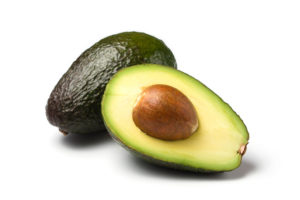
Avocado Dressing
With Ranch Greens
2 pitted, ripe avocados
3/4 scoop Ranch Greens
1 2/3 cups water
2 tablespoons lemon juice
1 tablespoon maple syrup (grade B)
1 tablespoon apple cider vinegar
1/2 teaspoon onion powder
1/8 teaspoon cayenne pepper
Salt and pepper to taste
Yield: 1 quart
Blend all ingredients in a high-powered blender until smooth. Add any of each ingredient to taste, if necessary.
Gluten – Free
Zucchini Bread With
Ranch Greens
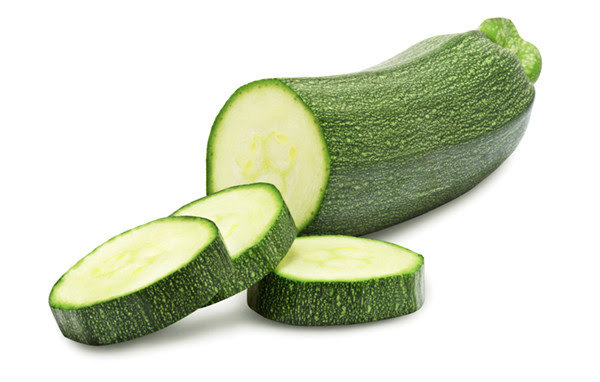
1 ½ cups gluten free all purpose baking flour
1 ½ teaspoon baking powder
½ teaspoon baking soda
½ teaspoon salt
¼ teaspoon smoked paprika
2 flax eggs (2 tablespoons flax meal and 6 tablespoons water, whisked)
1 cup coconut crystals
1 ½ cups grated zucchini
1 scoop Ranch Greens
1 jalapeno de-seeded and minced
1/3 cup olive oil
1/3 cup freshly – made almond milk
Whisk and kneed all ingredients. Spread batter onto a lightly oiled loaf pan. An 8 ½” x 4 ½” x 3” loaf pan is preferable. Preheat oven to 325 degrees. Bake for 50 – 55 min, until a toothpick can be cleanly pulled out without any sticking.
Let it cool, and enjoy!







